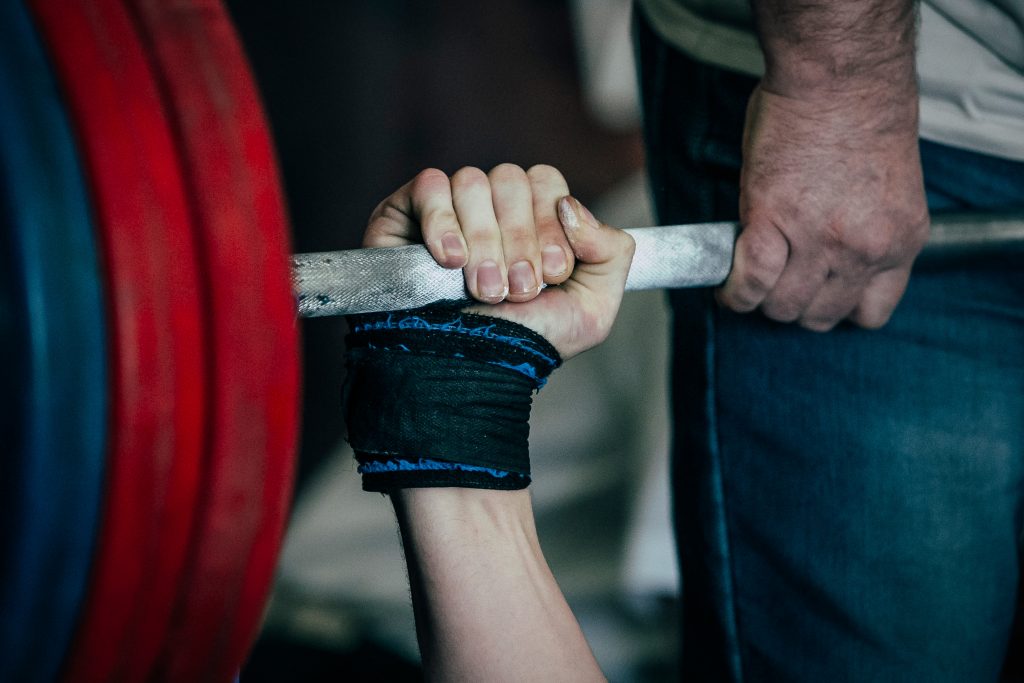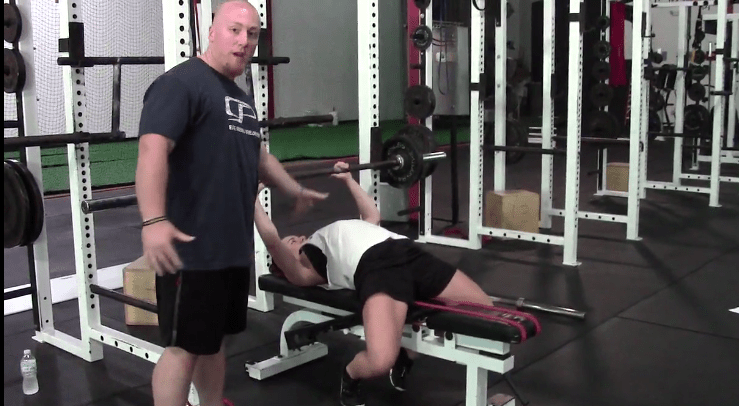I received an email awhile back from someone asking a simple question:
“What are the reasons one would or would not bench press with their legs on the bench as opposed to the floor? Just personal preference? Back issues?”
Tony of a few years back would have been like, “When would someone bench with their feet on the bench? WHEN HELL FREEZES OVER, THAT’S WHEN.”
Then that would have been followed by a guttural scream, dramatic desk clearing, and door slam.
You know, a mature, rational response.
Tony of today has a different viewpoint. Read below to hear allllll about it.

Why Bench Press With Feet On the Floor?
Why do we look both ways before crossing the street, or wash our hands after using the bathroom, or, I don’t know, wear pants to the dinner table?
It’s just the way stuff is done.1
The same can be said about the bench press. We perform it with our feet on the ground because that’s the way it’s supposed to be done.
To be a bit more colloquial, we perform it that way because:
- With the feet on the floor we can defer to a bit more leg drive which can help with lifting more weight; if that’s what you’re into.
- Moreover, as strength coach and competitive powerlifter Tony Bonvechio notes, “leg drive can help you get a bigger arch via hip extension.”

Now, admittedly, this last point is catered to more of the powerlifters in the room who are solely interested in one thing (well, two, after “where’s the nearest pizza buffet?”)….bench pressing as much weight as possible.
An arch in the lower back = a more biomechically sound position to shorten the distance the barbell must travel.
Both feet on the ground allows one to solidify the arch.
I love this analogy from Strength House coach Greg Robins:
“Think of it like a structural arch. In order to make an arch you need pressure from two sides. Like if you put a piece of paper on the table, and gently push from both ends simultaneously what do you get?
An Arch.”
A Slight Conversational Detour
For those who are about to hyperventilate into a brown paper bag at the mere notion of arching your back during a bench press, relax.
A kitten won’t die if it happens and it’s not inherently more dangerous to do so. Your lumbar spine has a natural lordotic curve to it anyways (an arch), sooooooo there’s that. And no one is sitting here insinuating you have to adopt a Marissa Inda bench set-up in order to bench press (and to do so with a high degree of success).
Much of what dictates how much of an arch to use is predicated on personal preference, goals, and what feels comfortable to each individual lifter.
Do you have to arch as much as the photo above? Nope.
Are you likely arching your back when you bench press, even if not on purpose, because that’s what your body is designed to do? Yep.
Will you please STFU and stop telling people arching is bad? ——> watch THIS.
Okay, Back to Benching With Feet on the Floor
I don’t have much more to say here.
If you’re interested in benching more weight, putting your feet on the ground is a splendid approach.2
Also, it decreases the chances you’ll drop the barbell on your face.
Why Bench Press With Feet On the Bench?
I’m not kidding when I say there used to be a time where I felt benching with the feet on the bench (or in the air) was one of the stupidest things someone could do, on par with texting while driving, thinking you can read a Thomas Pynchon novel in one sitting, or trying to take a selfie with a panther.
Pretty dumb.
However, we all marinate in our own ignorance sometimes.
As with anything in strength & conditioning there’s a time and place for everything.3
A drill I’ve been using in my own programming (and that of my clients) of late is the Larsen Press.
To explain the advantages of this stellar movement I’ll lean again on the shoulders of Tony Bonvechio and Greg Robins:
Tony:
“The main benefit of putting the feet up on the bench is teaching lifters to maintain their upper back arch and shoulder blade position. One of the biggest mistakes we see lifters make is collapsing the upper back as they bring the bar down, which can tip the shoulder blades forward and push the bar in front of the elbows. If you take away the legs, it’s much harder to keep the upper back arched, especially as you bring the bar down to the chest. Hook lying position, Larsen press and floor press are all variations of a no-legs press that work well.”
Greg:
“The biggest advantage I see to using feet up is to purposefully make the exercise harder. When the feet go up you have more range of motion and more instability which means more work for the muscles that move the weight – pecs shoulders triceps. I think this is really important for those who rely on big arches, and thrusting weights off their chest with their whole bodies.
There are other benefits as well:
– Create higher relative intensities with less weight on the bar.
– Awareness as Tony B said in how to stay tight.
– Relief on back and hips from being in contorted bench position.”
So There You Have It
So there you have it.


